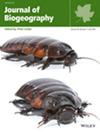If the positive occupancy–abundance relationship prevails, locally abundant species are widely distributed. Although broadly supported, studies on lake fishes have thus far contributed little to this topic, especially at intermediate and small spatial scales. Here, the main objective was to investigate the relationship between occupancy and abundance of lake fish species within a large lake, as well as examine the relative importance of ecological niches, functional traits and phylogenetic relatedness in forming the relationship.
Poyang Lake, China.
Fishes.
We calculated occupancy and mean abundance for 78 fish species and estimated niche position and niche breadth for each species based on a set of environmental variables. Additionally, we generated four functional trait vectors and one phylogenetic vector, describing trait similarity and phylogenetic relatedness, respectively. Linear models, hierarchical partitioning analyses and boosted regression trees were used in combination to explore the relative role of niche position, niche breadth, trait vectors and phylogenetic relatedness in determining fish occupancy, abundance and their relationship.
Occupancy and mean abundance of fish species in Poyang Lake showed a significantly positive and rather strong interspecific relationship. Interspecific variations in fish occupancy and abundance were well accounted for by niche position, followed by niche breadth. Nonetheless, trait vectors and phylogenetic relatedness were of minor importance in affecting fish occupancy and abundance. Additionally, occupancy was better explained than abundance by the predictor variables used, which was shown by both linear models and boosted regression trees.
This study suggests that the positive correlation between occupancy and abundance also occurs in lake fish species. Furthermore, ecological niche features, especially niche position, were more important than functional traits and phylogenetic relatedness in accounting for occupancy and abundance of fish species in Poyang Lake.


